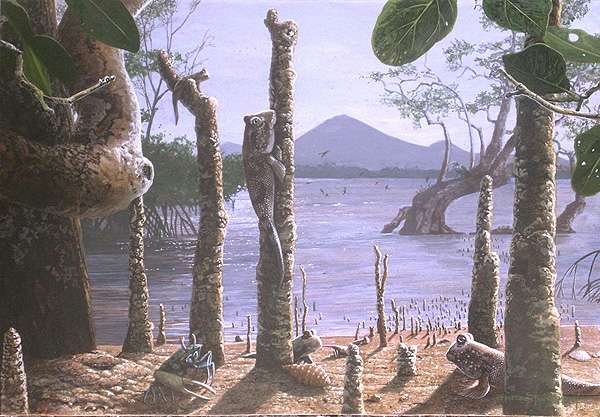acrylic on illustration board 6” x 12” $3,200 Life began in the sea and remained there for over 3 billion years. It's learned to thrive on land just as well, but occupying the intertidal zone, that strip between the two, continues to be a difficult trick, both ecologically and physiologically. Among fish, the best adapted to this zone are the mudskippers, a subfamily of gobies found through much of the Old World tropics, usually in association with mangroves, or intertidally adapted trees. Capable of breathing air through their skin and mouth linings, mudskippers flop about the beach at low tide, foraging for small arthropods. At high tide, they mostly retreat to burrows. One of the common Southeast Asian species is the three-inch long Dusky-gilled Mudskipper (Periophthalmus novemradiatus). Incidental species include fiddler crab (Uca sp.), hermit crab (Dardanus sp.), a Reef Heron (Egretta sacra), terns (Sterna sp.) and a Lesser Frigatebird (Fregata ariel). This painting was created for the upcoming touring museum show, Art of the Mangroves. |
